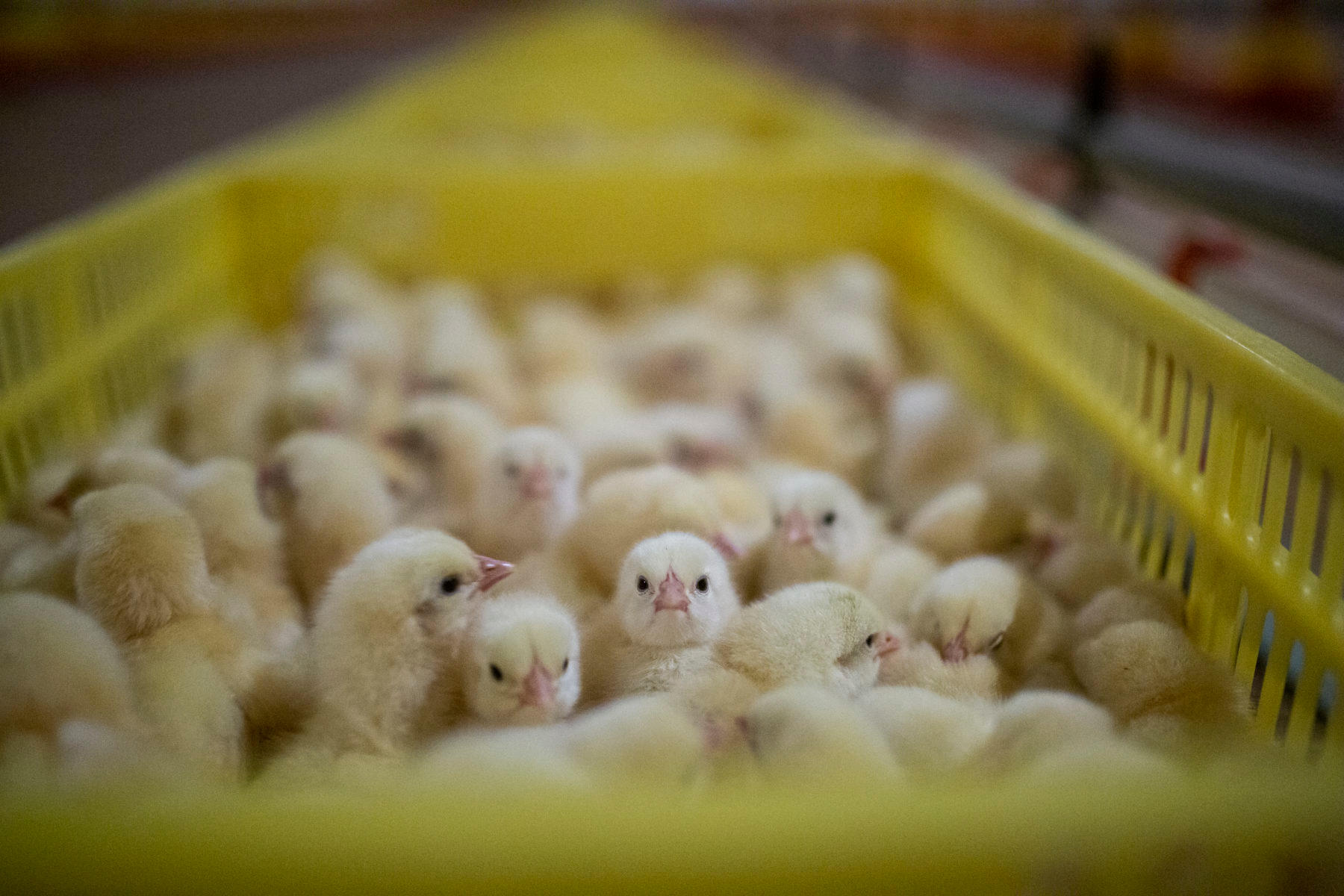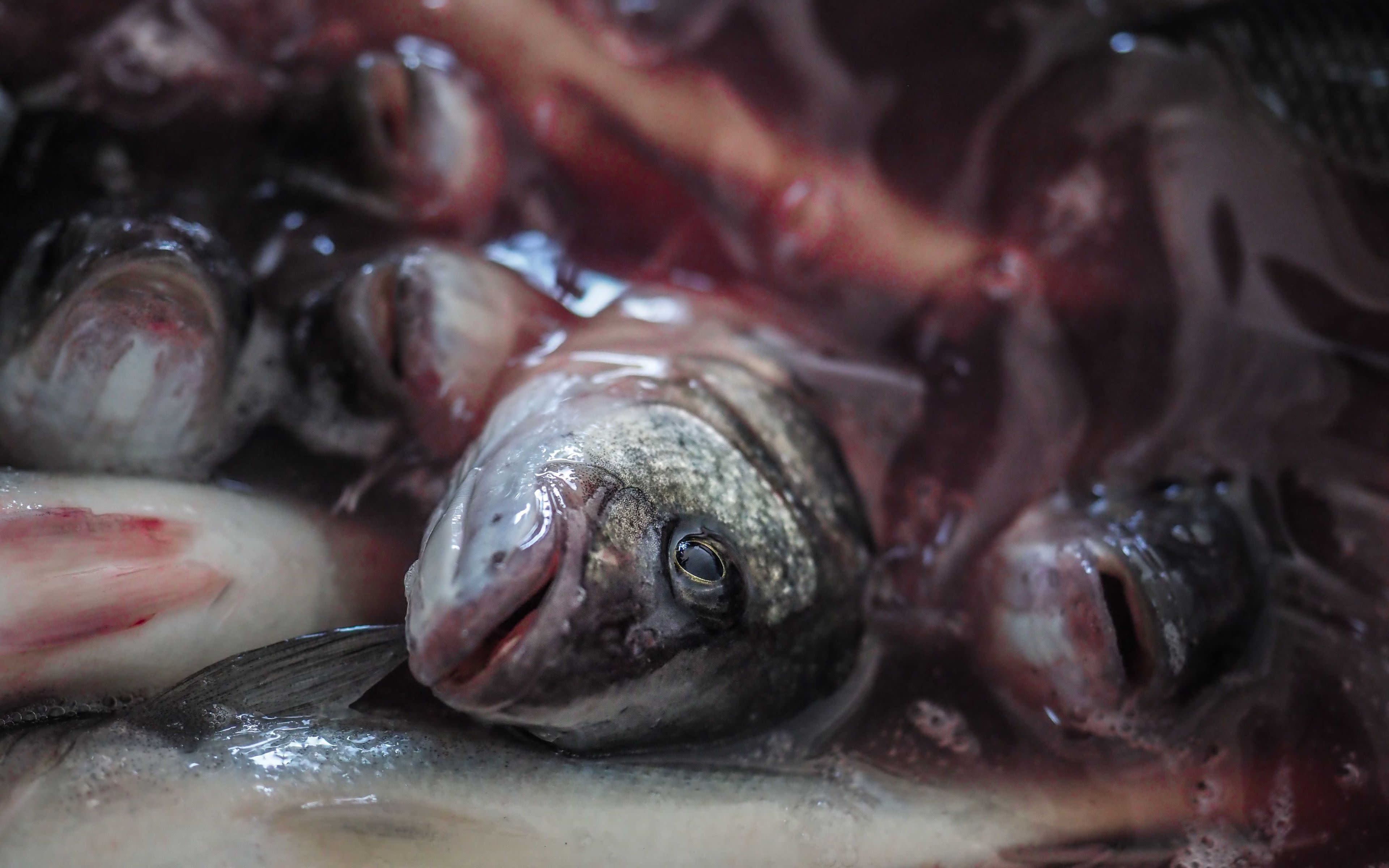




Farm animals face long, torturous journeys before even reaching slaughterhouses, crammed into trucks with no water, food, or protection from extreme weather conditions.

You may pass them on the highway without a second thought: transport trucks filled with farm animals on their way to the slaughterhouse. For the animals inside, the trip from factory farm to slaughterhouse is one of the most horrific experiences of their short lives.
In fact, 4 million broiler chickens, 726,000 pigs, and 29,000 cattle die in transport every year in the US alone. Their deaths are seen as collateral damage in an industry where maximizing profits is more important than providing basic animal welfare.

Starved & Dehydrated
Animals can be held captive in transport trucks for long periods of time. In the US, truck drivers are only required to stop animal transport trucks once every 28 hours, and this law is seldom enforced. In order to cut costs and maximize the amount of animals that can be transported at once, animals are often deprived of food and water for the entirety of their journey—up to 48 hours at a time—pushing them to the limits of how much starvation and dehydration they can endure. Can you imagine the stress of traveling for two days without stopping for food or water?
Aside from the 28-hour law, there are no protections for the well-being of animals in transport. The only respite some animals receive after their arduous journey is an offering of water from The Animal Save Movement, a group of dedicated activists who hold peaceful vigils at slaughterhouses and comfort animals upon their arrival.
Overcrowding & Extreme Temperatures
Factory farms will load as many animals as they can into a single transport truck, forcing them inside using electric prods and other cruel methods. Once inside, animals are packed so tightly that they do not even have room to sit or lie down, depriving them of rest for the entirety of their long journey. Free space is so limited on these trucks that animals will often trample each other in search of it, resulting in serious injury or even death.
The effects of overcrowding can be worsened depending on external temperatures, with packed conditions increasing the risk of heat stress. With no proper ventilation or access to water to cool themselves from the extreme heat, animals’ hearts begin to race, they hyperventilate, and, eventually, their organs can give out, resulting in sudden death.
All farm animals are susceptible to heat exhaustion, but some suffer disproportionately during live transport. Chickens are packed into tight crates with up to 12 other chickens, leading to increased risk of heat exhaustion as they fight one another for space. According to reports by the USDA, chicken manufacturer Pilgrim’s Pride loaded transport trucks full of chickens on the hottest days in the summer of 2017, resulting in over half of the birds dying in transit.
Cold weather can be just as fatal during live transport. These trucks are “open-sided,” meaning animals are almost fully exposed to outside temperatures and lack protections from rain, snow, and wind. Animals can get frostbite, hypothermia, or even freeze to death during winter transport, with slaughterhouse workers unloading trucks to find chickens “frozen solid like hockey pucks.”
Emotional Stress
Animals feel fear and pain, just like humans do. Subjecting them to these horrific conditions during live transport—no food or water, no place to rest, no shelter from extreme temperatures—is so stressful that some animals become sick during transport, with studies showing that young calves are vulnerable to dying of transport-related stress.
The way the meat industry abuses and neglects animals during transport is horrifying, but you can take action for them and be part of the solution. Start by leaving animals off your plate. Get a free Eating Veg starter guide to learn more.
 Amanda Waxman
Amanda Waxman




